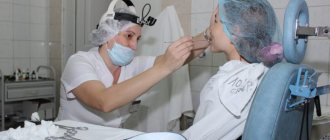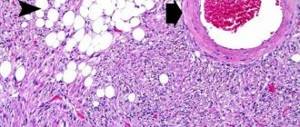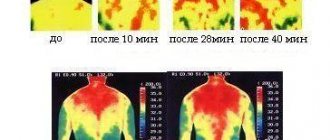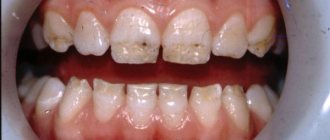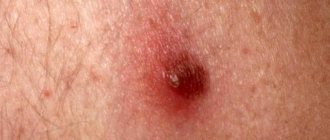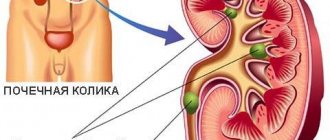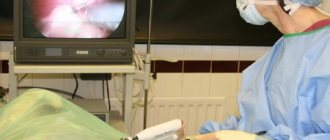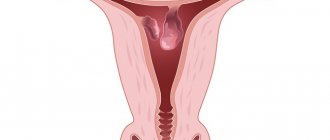Tartar is one of the dental diseases, the danger and consequences of which are often greatly underestimated. This is due both to the low level of public awareness about the disease and to the fact that many consider tartar to be a purely cosmetic problem.
Many questions about tartar from visitors to the VivaDent clinic website indicate that the main source of information about the disease for most people is information from advertising of oral hygiene products. But although tartar is indeed often mentioned in such sources, additional information about the causes, characteristics, prevention and course of the disease is usually missing. That is why the specialists of our clinic decided to devote the next article in the series of patient questions to the problem of tartar.
How does tartar appear?
Deposits on teeth in the form of a dense formation (stone) are hardened mineralized plaque. It often forms in the cervical area of the dental crown and causes aesthetic discomfort in humans. But the unattractive appearance of your teeth while laughing or talking is not the worst thing. Compacted dental mineralized deposits provoke gum disease and caries. Mineral deposits are not as rare a problem as they seem. This defect occurs in 80% of people, and even in childhood.
Composition of sediments:
- calcium and iron salts;
- particles of food residues;
- polysaccharides, proteins;
- particles of skin epithelium, mucous membranes, lips;
- microbes, coccal bacteria and others.
Mineral deposits are almost 90% inorganic. According to ICD 10, dental growths are characterized as a disease under code K05.6.
For what reasons do growths begin to be deposited on the crowns of teeth? This process depends on the composition of the salivary fluid and the quality of oral hygiene. For some people, stones appear in 3-4 months, for others the hardening process takes 9-10 months.
First, a thin protective film (pellicle) appears on the crowns, the purpose of which is to protect the enamel from the aggression of chemical compounds. The film forms almost immediately after brushing your teeth. After a couple of hours, plaque begins to accumulate on the pellicle, consisting of food components, bacteria and components of salivary fluid. If this formation is not removed within two days, a thickened plaque will appear. It gradually becomes denser due to the addition of new components and mineralizes (hardens). After 2 weeks, hard tartar will appear at the site of the plaque.
Due to the plaque that appears, the surface of the crown becomes rough, which allows for the accumulation of new deposits: it is easier for them to adhere to the convex surface. Bacteria are attracted to plaque and produce toxic substances during their life. Due to constant toxins, the mucous membrane around the tooth begins to become inflamed. The process of tissue inflammation is accompanied by the release of periodontal fluid, which is attractive to microorganisms. This liquid also contains protein, which attaches to the plaque that has already formed.
How to identify the main symptoms of a developing disease?
When talking about the early detection of tartar, doctors usually mean its subgingival form. This is explained by the fact that, unlike supragingival calculus, which is detected by visual examination of the teeth, the subgingival type of calculus can be identified only by indirect signs. These include:
- increased pain reaction of the gums to mechanical stress;
- frequent bleeding when brushing teeth;
- changes in gum color: redness, blueness;
- inflammatory processes of the gums in the area where the tooth emerges from its surface;
- loose teeth, purulent discharge;
- pain, discomfort.
You should also know that many manifestations of tartar can cause complications and transition of the disease to the stage of periodontitis. That is why its timely detection and treatment is so important.
Causes
The most important reason for the formation of growths is poor oral hygiene or lack thereof. If plaque is not removed in a timely manner, it will quickly turn into a hardened formation with bacteria. To prevent this process, you need to thoroughly clean all your teeth in the morning/evening and rinse your mouth after each snack. It is advisable to use not only a toothbrush, but also dental floss, mouthwash, and irrigator.
Other reasons that contribute to the formation of stones:
- unhealthy diet;
- bad habits;
- composition of saliva;
- malocclusion;
- defective chewing;
- endocrine diseases;
- disruption of the salivary glands;
- fixed orthodontic structures.
Not all toothpastes effectively clean plaque on teeth: the abrasiveness index (RDA index) must exceed 50 units.
Unhealthy eating includes baking, drinking lemonade, and soft carbohydrate foods. In order for saliva to cleanse teeth of plaque, you need to give preference to solid foods: raw vegetables and fruits, crackers. Chewing raw carrots or apples promotes the active secretion of saliva, which prevents plaque from depositing on the walls of the teeth. Eating crackers after meals also contributes to this.
Bad habits include smoking, frequent drinking of strong coffee and tea. These substances contribute to the rapid formation of dental plaque. Smoking is especially dangerous: tar deposits on the teeth, and hot smoke irritates the gums.
The composition of saliva also affects deposits. When the acid-base balance is disturbed (in the direction of increasing acidity or alkalization), rapid mineralization of plaque occurs. High acidity provokes hypermineralization, and low acidity promotes demineralization of the enamel - it becomes porous and vulnerable to deposits.
Diseases
The composition of saliva is different for all people. If it contains an increased concentration of minerals (calcium, fluorine), then they settle on the surface of the dental crowns. This promotes rapid mineralization of dental plaque. The formation of growths is also affected by the amount of saliva: there may be too much or not enough.
Incorrect bite and crooked teeth also negatively affect the formation of tartar. This is due to the incorrect positioning and curvature of the teeth: there is more space for the formation of tartar in the interdental space.
Inadequate chewing increases the risk of formation of growths. This defect is typical for people with partial edentia. A person has to chew only on one side (where all the teeth are), as a result, the opposite side is not washed with saliva. Accordingly, more plaque accumulates on it, which is a favorable environment for the formation of growths.
Fixed orthodontic appliances also contribute to the formation of build-up, as plaque accumulates in the gaps between them and the teeth. It is not always possible to thoroughly clean teeth with installed implants. Therefore, instead of a toothbrush, it is better to use a irrigator.
Endocrine and other diseases of systems and organs require constant use of medications. Some antibiotics negatively affect the composition of saliva and its density: this leads to the formation of plaque and stones.
Causes
The following factors include the appearance of tartar of any kind:
- Poor oral hygiene in general. This could be the wrong selection of a toothbrush, toothpaste, illiterate movements during daily treatment, or even a complete lack of necessary procedures.
- Poor quality nutrition - high content of carbohydrates and soft foods, rare consumption of fresh vegetables, passion for sweet carbonated drinks, etc.
- Malocclusion or teeth that are uneven, twisted, or too close together.
- Poor quality or incorrectly installed prostheses, implants, fillings.
- General diseases can also contribute to the formation of subgingival stone - impaired metabolism, any pathologies in the functioning of internal organs.
Initially, a light thin and soft coating appears. Then a plaque forms, which is no longer easy to clear. Very quickly, without proper treatment, it hardens and darkens, which only aggravates the problem. When the stone has become hard and old, it becomes much more difficult to clean it even with the help of special tools.
Symptoms
You can independently determine the presence of hardened deposits using your tongue. You need to run the tip of your tongue over your teeth next to the gum. If roughness is felt, it means that deposits have already formed. On the frontal part of dental crowns, deposits are visible when talking and smiling. If a person is addicted to black tea, coffee or cigarettes, the deposits will turn dark.
The next symptom is bleeding gums. If deposits have accumulated in hard-to-reach corners of the interdental space and periodontal pockets, they will make themselves felt by inflammatory processes in the gums. Sometimes these processes are accompanied by slight bleeding: when brushing your teeth, when biting off solid food (apple, carrot).
Soreness on contact is the next symptom. Mineral growths on the enamel provoke inflammation of the soft tissues around the tooth, so when pressing or brushing, a slight pain is felt. Sometimes pain is felt even when chewing food.
If plaque is not removed in time, deep periodontal pockets may form, exposing the cervical area of the crown. In this case, the teeth will react to changes in food temperature: hot-cold/sour-sweet.
What is the danger of the disease?
As mentioned above, the main reason for the danger of tartar is its location. Occurring at the bottom of the tooth, tartar often grows into the gum or gum pocket, causing infection, inflammation, sensitivity and bleeding of the gums.
If you ignore the disease and do not take timely measures to treat it, then there is a high probability of various complications, including the occurrence of periodontitis. Tartar can also cause loose teeth and, if complications arise, loss of teeth.
Types of tartar
Depending on the location of the growths, two types are distinguished:
- subgingival tartar;
- supragingival calculus.
There is another variety - a stone bridge. This formation involves several dental units at once. Most often, a bridge is formed on the lower front teeth on the tongue side.
Supragingival
Patients themselves notice supragingival deposits. They are localized above the gum level, on dental crowns. Most often they appear on the lingual side of the teeth, as a person does not pay enough attention to oral hygiene. Another name for these stones is salivary stones.
These growths are unsafe: they can destroy the structure of the soft tissue of the gums and penetrate deep into periodontal pockets. They also have a detrimental effect on the composition of the enamel: they soften it, as a result of which caries begins to develop.
Timely and high-quality oral care prevents the formation of tartar.
Is it possible to remove supragingival deposits? This can be done by the person himself if he cleans the oral cavity properly. Salivary stones are also removed at the dentist's office.
Subgingival
These growths cannot be seen with the naked eye: they are located in periodontal pockets. That is, hidden under the gums. You can guess the presence of subgingival deposits by the pain when chewing and brushing your teeth, as well as by periodic bleeding of the gums.
These growths are much more dangerous than supragingival ones, as they provoke inflammatory processes in the gums - periodontitis, periodontal disease. As a result, the periodontal ligaments are destroyed, the level of the gums rises, and teeth become loose and fall out.
It is impossible to remove these growths on your own; you need to contact a dentist or periodontist. In addition to cleansing the crowns of your teeth from mineralized plaque, you also need to treat your gums.
Tartar: a disease or just a defect?
Tartar is a special form of plaque on teeth. These are hardened remains of food, dead bacteria and epithelial cells that contain phosphorus and iron compounds. Such formations are firmly attached to the tooth enamel, making them difficult to remove through simple brushing.
The main place for the formation of tartar is the lower part of the tooth and its back wall, which not only makes it difficult to detect the disease when examined by a doctor, but also causes various complications. According to doctors, this location of the foci of tartar formation is due to the proximity of the ducts of the salivary glands. The enzymes and chemical composition of the secretions of these glands contribute to the accelerated formation and hardening of dental plaque.
How to remove deposits at home
Dense growths cannot be removed from teeth; a dentist will help with this. But soft (partially mineralized) plaque can be removed.
To remove tartar you need:
- Electric Toothbrush;
- ultrasonic brush;
- irrigator.
The principle of operation of an electric toothbrush: breaks up deposits and then cleanses teeth of them. To do this, you need to use the desired rotation mode. A pulsating rhythm is suitable for breaking up deposits; a reciprocating rhythm is used to cleanse broken deposits. An ultrasonic brush quickly destroys partially mineralized growths and plaque.
An irrigator is a device for cleaning teeth using a jet of water under pressure. The advantage of an irrigator over an electric brush is that it does not harm tooth enamel. A jet of water under pressure gently removes plaque on the surface of the crown, in the interdental spaces and in shallow periodontal pockets. Irrigators can use herbal or medicinal solutions.
Traditional methods
Is it possible to remove growths using improvised means? This is dangerous for the health of the enamel, because homegrown methods are based on the use of either abrasives or acid. Both have a negative effect on the enamel, thinning its layer and softening its structure.
Abrasive agents (soda, salt, ash, chalk) aggressively attack the enamel surface, leaving scratches on it invisible to the naked eye. Pathogenic microorganisms easily penetrate these cracks and cause carious lesions.
Acid (citric acid, vinegar) softens tartar and along with it the enamel. As a result, the protective coating of the teeth becomes vulnerable to the aggression of microbes and pathogenic microorganisms. Inept use of hydrogen peroxide is also dangerous. If you exceed the percentage of peroxide when diluted with water, you can burn the mucous membranes of the mouth and throat.
Removing tartar on your own will damage the enamel and mucous membrane of the gums.
The use of herbal infusions (including alcohol) will only lead to staining of plaque and pigmentation. If you use celandine juice, you can burn the oral mucosa and even get poisoned. Because celandine juice is a poison.
If you try to remove plaque using tweezers and other metal objects, you can cause irreparable damage to the enamel. This is absolutely not possible. Iron objects can damage not only the enamel, but also injure the mucous membrane with careless movements.
Methods for removing plaque in a dental clinic
Dentists practice several methods of cleansing enamel from mineralized plaque:
- mechanical;
- chemical;
- using ultrasound;
- sandblasting;
- using a laser;
- combined.
Mechanical method
Cleaning plaque manually using tools. This is an outdated method, but it is still used in government clinics. The doctor uses metal instruments and treats each tooth separately. Cleaning is also carried out using a drill and special attachments.
The advantages of this method are price and prevalence. There are many disadvantages: pain, risk of damage to the enamel and mucous membrane, long rehabilitation period, bleeding gums.
Ultrasonic cleaning
A modern method of removing stones. The device creates ultrasonic vibrations that mechanically destroy dense mineralized structures. There is another method - using an antiseptic liquid. In this case, ultrasonic waves create many bubbles in a liquid medium, which destroy dense structures upon contact with them (explode).
The advantages of the method are effective cleansing, absence of unpleasant sensations, low trauma. Pain medication is only required when cleaning periodontal pockets. Disadvantages - enamel injury due to improper use of instruments; cannot be used by patients with fixed orthodontic structures (fastenings are damaged). The cost of the service is several times more expensive than mechanical cleaning.
Air Flow Method
Air Flow (sandblasting) is the removal of formations using a water-air jet under pressure. Abrasive particles of specially treated soda are added to the solution. They destroy hard formations on the enamel. The solution is also flavored with lemon or mint extract.
The advantages of the method are the absence of painful sensations, can be used with installed orthodontic structures,
After sandblasting, virtually no plaque is formed: food debris does not stick to the smooth surface. The enamel brightens by 1-2 tones.
The disadvantage of this method is that it only removes small, partially mineralized plaque and is not suitable for removing large hard formations. This method cannot treat gum pockets more than 5 mm deep. The sandblasting method is used in addition to laser or ultrasonic cleaning.
Laser cleaning
The principle of laser cleaning of tartar is the evaporation of moisture from the neoplasm, due to which dense structures are destroyed. During the procedure, the enamel layer is not affected, since it does not contain water (moisture less than 1%). The laser method is the most gentle, painless and effective. In addition to cleansing, the laser beam destroys pathogenic microflora and activates tissue regeneration processes. The effect of enamel whitening is also noticeable.
After removing mineralized formations, the enamel surface remains rough, which can provoke the rapid accumulation of a new layer of plaque. Therefore, after cleaning, sandblasting is carried out, after which a perfectly smooth surface remains.
However, the laser technique has many contraindications:
- age 18+;
- periodontitis;
- installed fillings;
- presence of braces, implants;
- pregnancy, lactation;
- pathologies of the cardiovascular system;
- presence of a pacemaker;
- pathologies of the respiratory system;
- enamel pathologies;
- dangerous infections.
The disadvantages of this method include the high cost of the dentist’s work. However, the result justifies the cost. After grinding the enamel, fluoridation can be done—coating the crowns with a protective layer. This procedure significantly reduces the risk of re-formation of dense plaques. For fluoridation, special varnishes and gels are used. The procedure is completely painless and inexpensive.
What methods are used to treat tartar?
The main solution to problems associated with tartar is its complete elimination. Depending on the type of stone and the presence/absence of complications, various removal methods are used, including surgical extraction from the inflamed gum.
To remove supragingival stone, special tools are used or, in cases of large hardening formations, cleaning with sand or air flow. Subgingival tartar is removed using the ultrasonic method.
It is important to remember that professional and effective removal of tartar can only be guaranteed by a specialist. All “home” methods for solving the problem may not only fail to provide the desired result, but also cause complications.
Bottom line
Tartar is most often the cause of caries and gum inflammation. These dense structures consist of dental plaque, mineral components contained in saliva and bacterial waste products. Regular professional cleaning of enamel from stone will protect teeth from caries and gums from inflammatory processes.
Sources used:
- Kuryakina N.V., Kutepova T.F. Periodontal diseases. — M.: “Medical Book”, 2003
- Lukinykh L.M. Periodontal diseases. Clinic diagnostics, treatment and prevention / L. M. Lukinykh, E. N. Zhulev, I. N. Chuprunova. - Nizhny Novgorod: publishing house NGMA, 2005.
- Smoking and periodontal disease // Australian Dental Journal. — 2009.
- The American Academy of Periodontology
Which brands of toothpastes have you used?
- Colgate 32%, 29097 votes
29097 votes 32%29097 votes - 32% of all votes
- Splat 24%, 21853 votes
21853 votes 24%
21853 votes - 24% of all votes
- ROCS 16%, 15165 votes
15165 votes 16%
15165 votes - 16% of all votes
- Sensodyne 11%, 10271 votes
10271 votes 11%
10271 votes - 11% of all votes
- New pearls 11%, 9861 votes
9861 votes 11%
9861 votes - 11% of all votes
- President 6%, 5877 votes
5877 votes 6%
5877 votes - 6% of all votes
Total votes: 92124
Voted: 49741
17.01.2018
×
You or from your IP have already voted.


